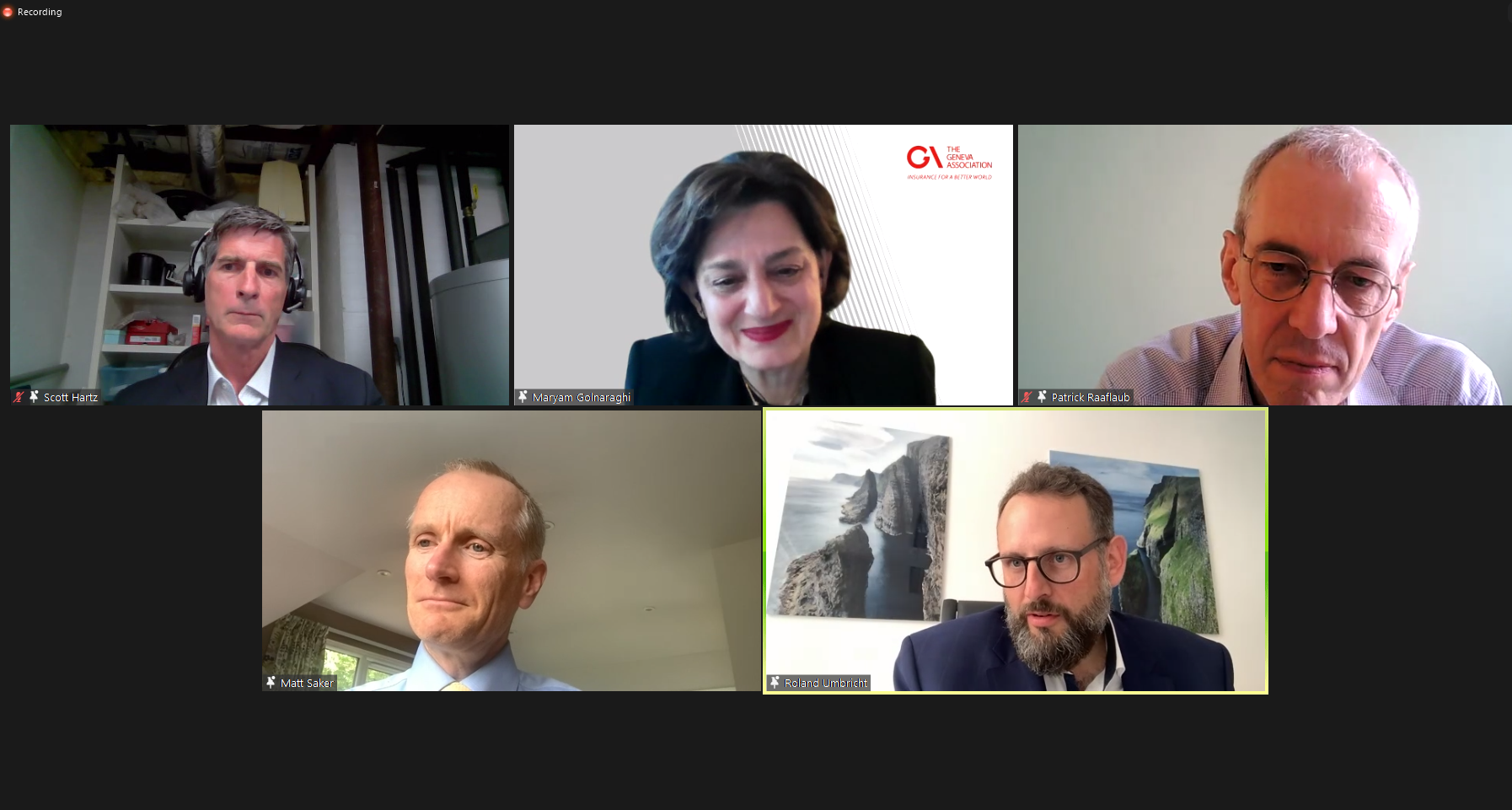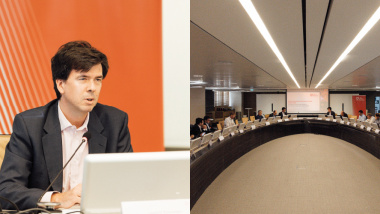
(Top) Martin Weymann, Head of Sustainability, Swiss Re; Claire O’Neill, Managing Director, Climate & Energy, WBCSD; Chip Cunliffe, Biodiversity Director, AXA XL. (Bottom) Marie Dirion, Managing Director, Moody’s Investor Service; Margaret Kuhlow, Finance Practice Leader, WWF; Michele Lacroix, Head of Group Investment Risk & Sustainability, SCOR.
The second panel discussion looked at how to measure the materiality of environmental risks and incentivise behavioural change.
Key messages:
- A central repository of corporate decarbonisation baselines or pledges is needed. Nationally determined contributions (NDCs) cannot be used in place of corporate footprints.
- Actions are needed to reduce GHG emissions, remove carbon from the atmosphere through carbon capture or storage, adapt to climate risks – through, for example, infrastructure improvements – and protect nature-based systems.
- The accounting and valuation of natural capital is fundamental to facilitating the transition away from carbon-heavy assets. The TNFD has an important role to play in supporting nature-positive decision making, by providing a framework for businesses to disclose and act on nature-based risks.
- Sectors that are most exposed to biodiversity and nature-based capital-related risks must be identified.
- The EU is developing a framework that enhances the use of insurance against climate-related risks and promotes insurance disaster schemes to encourage investment in adaptation.
Implications for insurers:
- Insurers need to go beyond simply considering the risks on their own balance sheets and think about the broader impacts they can have through their actions.
- Insurers should leverage innovation but also use existing tools such as ENCORE (Exploring Natural Capital Opportunities, Risks and Exposure), as well as engage with the TNFD, to examine their own nature-related risks. They will need a combination of quantitative and qualitative models to develop decision-useful risk information.
- Parametric products need to be better developed and scaled. Collaboration will be required between the insurance industry, governments and multilateral organisations.














